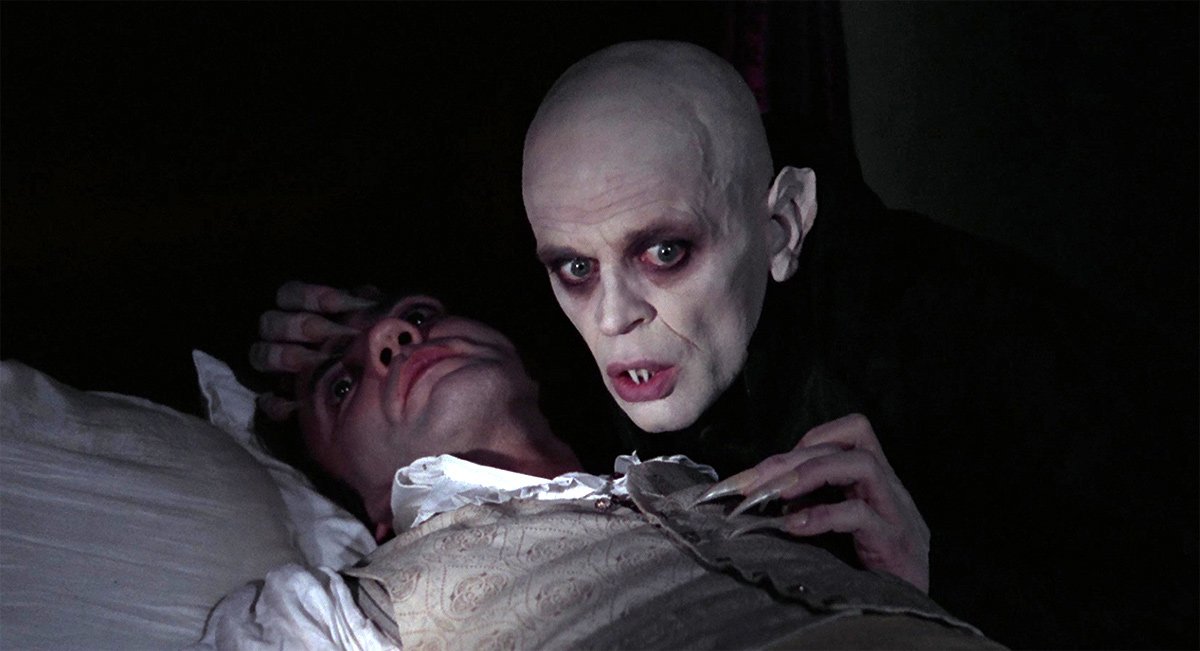Celebrate Werner Herzog’s birthday with this fabulous triple feature
by Jeff Mitchell
Filmmaker legend Werner Herzog turns 81 years young on September 5, and this innovative director has been challenging and dazzling audiences with his narrative stories and documentaries for 61 years! I’ve repeatedly declared that Werner and Morgan Freeman should narrate everything, and Herzog’s movies - with his intellect, cinematic choices, and unique staccato (uttered during his docs) - are must-see events.
Not only is Werner inventive in front of and behind the camera, but the man is fearless, as evidenced by his explorations across the globe, including several volcanoes, an ancient cave, the Amazon rainforest, and Antarctica.
However, one of his most dangerous encounters is not with a location but with a person, Klaus Kinski.
Kinski (1926 – 1991) was an unstable, explosive, and unpredictable personality and, quite frankly, a maniac of sorts. At times, he was impervious to reason. Still, Werner worked with Klaus on five movies.
During an in-person talk (that was posted on March 30, 2012 by BAMorg on YouTube), Herzog said, “I always get the very best out of actors. Always, magnificent, including Kinski, by the way, who did 205 shitty films, but in my films, he’s really magnificent.”
To celebrate Werner’s birthday, here is a Herzog triple feature, and all three movies - one insightful doc and two renowned narratives – feature Kinski.
Enjoy, and Happy Birthday, Werner!
“My Best Fiend” (1999) – As mentioned earlier, Werner featured Kinski in five movies, but after watching “My Best Fiend” – in which Herzog describes, rationalizes, and demonizes his contentious relationship with the man – you’ll wonder how they ever finished one. Although their initial movie was “Aguirre, the Wrath of God” (1972), they first met when Werner was 13. Werner travels to a specific Munich apartment building – his childhood home for a stretch - and recalls that his family lived with Klaus for a few months. What? Werner illustrates Kinski’s sheer madness at that time, and the documentary also offers footage from all five flicks, including the infamous actor’s mindless rages on “Aguirre” and “Fitzcarraldo” (1982), as Herzog and others on the sets describe their surreal experiences too. Still, Werner worked with him for years, but hey, what are fiends for!
“Aguirre, the Wrath of God” (1972) - The year is 1560, and an ambitious group of conquistadors look for El Dorado, the Lost City of Gold, deep in the heart of South America, but their journey is anything but gilded. This massive troop of unhappy travelers – who trudge up and down steep mountains, slog through deep pools of mud, and paddle aimlessly on a raging river – are led by Gonzalo Pizarro (Alejandro Repulles) and Don Pedro de Ursua (Ruy Guerra). However, their troubles go from bad to hopeless when Don Lope de Aguirre (Kinski) begins calling the shots, and this delusional egomaniac fires figurative and actual bullets to secure his hold on the dwindling flock. Herzog captures jaw-dropping images of the Spanish nationals, slaves, and locals descending – almost from the heavens – into the tropical beauty, but once they set foot into their despairing reality, anguish slowly encircles them via the elements, indigenous forces, and within their own company. With a near-constant looks of rage, vengeance, or determination, Aguirre both passively and aggressively decrees his twisted ideals, while Werner’s vision deliberately kills any wish for his audience to plan a camping trip.
“Nosferatu the Vampyre” (1979) – Herzog sinks his teeth into a horror classic and chews a chilling arthouse picture with Kinski playing the title role. Makeup artists Dominique Colladant and Reiko Kruk work – almost supernatural – magic in applying Kinski’s monster maquillage. Count Dracula has a shocking, sallow skin tone, terrifying teeth, and frightening fingernails, which make an appalling appearance in front of an unsuspecting Jonathan Harker (Bruno Ganz). Werner takes a minimalist approach with The Count’s close encounters and brilliantly relies on his marvelous cast to drive the tension with each mesmerizing interaction, and Dracula’s initial pursuit of Jonathan is fodder for frequent nightmares. Isabelle Adjani is helpfully haunting as Lucy, and Roland Topor’s delirious take on Renfield should be the principal template for the character until the end of time. Of course, Kinski is a fearsome sicko as Dracula, who works wonders with movement in small spaces. However, Herzog doesn’t confine his production to an indoors-only film. He captures majestic shots of seaside strolls, mountainous terrains, and stark impressions of countless coffins and rats infiltrating Harker’s hometown of Wismar, Germany. Yes, please invite this Nosferatu flick into your homes…if you dare.














